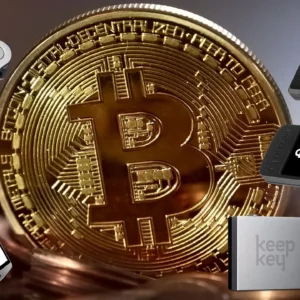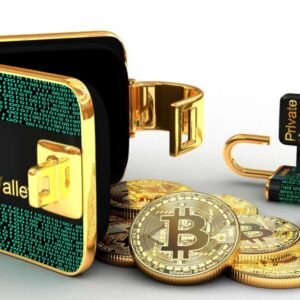Introduction: A New Crypto Era Dawns
The world of cryptocurrency is no stranger to explosive growth, with tokens regularly outperforming traditional assets by wide margins. But in the post-2021 world, where regulatory scrutiny and market skepticism have grown, the next big 100x opportunity may not come from obscure meme coins or newly-launched tokens. Instead, it could come from established giants that have already weathered storms and shown remarkable innovation and resilience.
In particular, How Solana, Bitcoin (BTC), and XRP are positioned within the current market dynamics suggests these heavyweights are not done growing yet. Each brings something unique to the table—Solana’s blistering speed and low fees, Bitcoin’s dominance and institutional adoption, and XRP’s foothold in cross-border finance. This trio is increasingly being seen as the potential driving force behind the next monumental surge in crypto valuations.
In this deep dive, we’ll explore how each of these cryptocurrencies is strategically placed to lead the charge toward the next big crypto rally—and why you should be paying attention.

1. Bitcoin (BTC): The Foundation of Trust and Institutional Capital
Bitcoin is the OG of crypto for a reason. Since its creation in 2009, BTC has evolved from a peer-to-peer digital cash concept into a globally recognized store of value, often dubbed “digital gold.” Its market dominance remains formidable, typically hovering above 40%, and it still sets the tone for broader crypto market trends.
But what’s more compelling now is how Solana, Bitcoin (BTC), and XRP are evolving beyond retail speculation. Bitcoin, in particular, has become a magnet for institutional capital. Major players like BlackRock and Fidelity are pushing for Bitcoin ETFs, bringing legitimacy and a flood of traditional money into the space. The approval of spot Bitcoin ETFs in 2024 marked a pivotal shift, opening the floodgates for trillions of dollars in investment.
Add to this the upcoming Bitcoin halving in April 2024, which historically correlates with bullish cycles, and you have a setup that could ignite the next exponential surge. With a fixed supply of 21 million coins, increased demand driven by scarcity could significantly impact price trajectory.
Bitcoin’s layered scaling solutions like the Lightning Network are also making strides. They aim to solve the scalability issue by enabling fast and cheap transactions while preserving the network’s decentralization. This technology might finally allow Bitcoin to serve as both a store of value and a viable medium of exchange.
So, if you’re looking at which assets might power the next 100x wave, BTC is not just a legacy token—it’s still one of the strongest contenders.
2. Solana: Speed, Scalability, and the Revival of Web3
The blockchain trilemma—balancing decentralization, security, and scalability—has plagued projects for years. Solana, however, has made impressive progress toward solving this problem. Designed for high throughput, Solana boasts transaction speeds of up to 65,000 per second with fees that cost a fraction of a cent. That’s not just fast—it’s revolutionary.
Understanding how Solana, Bitcoin (BTC), and XRP are shaping the next stage of crypto requires us to appreciate the unique value Solana brings. While Ethereum continues to battle congestion and high gas fees, Solana has emerged as the go-to platform for developers wanting to build fast, cost-effective decentralized apps (dApps). Whether it’s DeFi protocols, NFTs, or gaming platforms, Solana is gaining ground quickly.
The network faced significant criticism in 2022 and 2023 for downtime and stability issues. However, Solana Labs has since rolled out significant upgrades to improve network reliability, which are already bearing fruit. New partnerships and ecosystem developments—such as the integration of AI tools, DePIN (Decentralized Physical Infrastructure Networks), and mobile-first wallets like Solana’s Saga phone—are setting the stage for a vibrant ecosystem.
Perhaps most notably, Solana has found favor among venture capitalists and big players like Visa, which recently launched stablecoin settlement on the Solana blockchain. This kind of institutional interest boosts credibility and increases the odds that Solana will be a central pillar of Web3 infrastructure going forward.
If there’s a blockchain poised to deliver rapid and widespread adoption due to its technology and vision, Solana is a prime candidate.
3. XRP: The Sleeper Giant in Global Finance
XRP’s journey has been anything but smooth. Wrangling with the U.S. Securities and Exchange Commission (SEC) since 2020, Ripple Labs—the company behind XRP—has faced a grueling legal battle. However, 2023 brought a partial victory: A federal court ruled that XRP is not a security when traded on exchanges, a landmark moment that boosted investor confidence.
The case’s resolution revitalized interest in how Solana, Bitcoin (BTC), and XRP might lead the next major crypto wave. XRP is uniquely positioned in the financial ecosystem. Unlike most cryptocurrencies that aim to replace traditional finance, XRP works with it. RippleNet and its On-Demand Liquidity (ODL) product leverage XRP to facilitate real-time, cross-border settlements—something the existing SWIFT system cannot do efficiently.
Central banks and financial institutions across the globe are exploring or already using Ripple’s technology. Partnerships with entities like SBI Holdings in Japan and Banco Santander in Europe show that the use case for XRP isn’t theoretical—it’s actively being implemented.
Furthermore, Ripple is making strides toward launching its own Central Bank Digital Currency (CBDC) platform, designed to allow governments to issue and manage digital currencies using XRP Ledger infrastructure. If successful, this could open a new floodgate of institutional adoption for XRP.
While other projects focus on DeFi or NFTs, XRP has its sights set on a trillion-dollar industry: cross-border payments. If it can capture even a small percentage of that market, the potential for a 100x rise becomes far more realistic.
4. Interoperability and the Bigger Picture
A core theme in how Solana, Bitcoin (BTC), and XRP are evolving is their increasing focus on interoperability and real-world utility. These assets aren’t just surviving; they’re adapting to build bridges between crypto ecosystems and traditional finance.
Bitcoin, through Layer 2 innovations, aims to power everyday transactions. Solana is emerging as a performance-based Layer 1 that can host an entire Web3 ecosystem. XRP continues to innovate in real-time cross-border financial settlements. But what happens when these protocols start to work in harmony rather than isolation?
We’re seeing the beginnings of this: token bridges, cross-chain swaps, and multi-chain wallet support are becoming more common. For instance, developers are building bridges from Solana to Ethereum and Bitcoin, enabling liquidity to flow across platforms. XRP Ledger also supports wrapped tokens and smart contracts through hooks, opening up more utility beyond just payments.
This synergy is key to a scalable and unified digital economy. The next 100x surge is unlikely to be driven by isolated use cases. Instead, it will come from the fusion of high-performance blockchains, seamless user experiences, and trust from both retail and institutional players.
Moreover, macroeconomic factors like inflation, banking instability, and de-dollarization are creating a favorable backdrop for crypto. As central banks experiment with CBDCs and financial systems move toward decentralization, having infrastructure-ready tokens like how Solana, Bitcoin (BTC), and XRP becomes not just beneficial—but essential.
Conclusion: Time to Position for the Next Crypto Boom
With so many new coins entering the market daily, it can be hard to separate the hype from the truly transformative projects. Yet if history is any guide, it’s the battle-tested, high-utility assets that tend to lead the charge during crypto booms.
How Solana, Bitcoin (BTC), and XRP have proven their resilience and adaptability through multiple market cycles. They’ve attracted institutional backing, built expansive ecosystems, and shown that they can evolve with shifting technologies and regulations. From high-speed DeFi platforms to global settlement layers, they are laying the groundwork for mass adoption.
If you’re planning your strategy for the next bull run, these are three assets that deserve a place on your radar—and possibly in your portfolio.
What are your thoughts on the future of these cryptos? Leave a comment below and let’s discuss how you’re positioning for the next 100x opportunity.







This Post Has One Comment